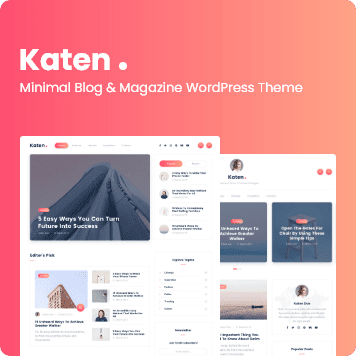
Travel should be a universal right, and with thoughtful planning and the right resources, travelers with disabilities can explore the world with confidence. This comprehensive guide covers everything from initial research and transportation options to accessible accommodations, attractions, technology tools, and safety tips. Whether you use a wheelchair, have a visual or hearing impairment, or face other mobility challenges, learn how to craft an enriching, barrier-free journey. Let’s dive into the key steps and best practices for accessible travel.
Research & Planning

Planning a smooth, accessible trip is its own form of Travel Hacking 101. It’s all about working smarter, not harder. The adventure truly begins with thorough research—dig into destinations celebrated for their inclusive infrastructure, like cities with barrier-free sidewalks, reliable accessible transit, and attractions that welcome everyone. Don’t just rely on official tourism sites (though their accessibility guides are a great start!). Tap into the real-world wisdom found in specialized blogs and community forums like TravelABILITY, where fellow travelers share firsthand tips and honest reviews. Think of it like building your personalized accessibility toolkit: compile that dream list of sites, then cross-reference with accessibility ratings to craft an itinerary that’s as inspiring as it is realistic. Because when you find those spots that truly cater to your needs, that’s when you unlock the real joy of exploration.
Transportation Options
Choosing the right mode of transportation can make or break your trip. Many airlines offer pre-boarding, aisle chairs, and wheelchair stowage, but policies and fees vary widely. Always notify the carrier at least 48 hours in advance and reconfirm 24 hours before departure. For train travel, look for services with level boarding, wheelchair spaces, and accessible restrooms. When renting a car, select specialized agencies that provide hand controls or wheelchair-accessible vehicles. In cities, rideshare apps like Uber & Lyft now include accessible vehicle options in select markets—download the app & explore the features in advance.
Accessible Accommodations
Finding accommodations equipped for disabilities is crucial. Filter hotel search engines for keywords like “accessible room,” “roll-in shower,” or “hearing-impaired amenities.” Contact the property directly to confirm door widths, bathroom grab bars, and elevation changes. For longer stays, consider vacation rentals listed on platforms such as Airbnb that clearly categorize accessible listings. Read guest reviews for real-world feedback and request floor plans or photos when possible. Always secure written confirmation of the accessibility features you need to avoid surprises upon arrival.
Attractions & Activities
Not all tourist sites are created equal—some landmarks boast full ADA compliance, while others remain challenging. Reach out to attraction operators before you go to inquire about elevator access, tactile exhibits, seating availability, or sign-language interpreters. Many museums and historical sites offer disability passes granting companion admission or priority seating. Outdoor adventures like national parks often feature paved trails and accessible viewpoints; check the park service website for detailed trail maps. For guided tours, seek companies that specialize in inclusive travel and staff trained in disability etiquette.
Assistive Tech & Travel Apps
Modern technology can bridge many accessibility gaps. Apps like Wheelmap help you find and rate wheelchair-friendly venues around the world. Be My Eyes connects visually impaired travelers with volunteers via live video for navigation assistance. TrekkerXplorer provides talking GPS for the blind, while Soundscape creates immersive audio maps. Don’t forget general tools: Google Maps offers wheelchair-accessible transit routes in select cities, and Avaz communicates with symbol-based language boards. Charge your devices, pack extra power banks, and download offline maps before you depart.
Packing Tips & Essential Gear
Strategic packing reduces stress and ensures you have what you need. If you use mobility aids, invest in lightweight, foldable models designed for travel. Protective cases and custom-fit straps will safeguard wheelchairs or scooters during transit. Include a small repair kit with tools, spare parts, and duct tape for quick fixes. Pack medications and prescriptions in carry-on luggage, along with doctor’s letters explaining any specialized equipment. Compression socks, ergonomic cushions, and noise-cancelling headphones can enhance comfort in planes and trains.
Budgeting, Insurance & Documentation

Travel with confidence by securing comprehensive insurance that covers medical evacuation, equipment loss, and trip cancellations. Compare specialized insurers who understand disability-specific risks. Keep digital and physical copies of important documents: passports, health insurance cards, doctor’s notes, equipment receipts, and accessibility confirmations from hotels or carriers. Track expenses related to accessibility fees—many jurisdictions require businesses to provide reasonable accommodations at no extra charge, so you may be entitled to reimbursement.
Health & Safety on the Road
Prioritize your well-being by researching healthcare facilities at your destination. Identify hospitals or clinics with disability-accessible entrances and elevators. Pack a first-aid kit tailored to your needs, and if you have chronic conditions, arrange for prescription refills or find local pharmacies in advance. Stay hydrated, maintain a regular routine, and factor in extra time for transfers and rest. In emergencies, local disability organizations can provide on-the-ground support and translation services when language barriers arise.
Connecting with Local Communities & Resources
Building connections enhances your experience and uncovers hidden opportunities. Reach out to local disability advocacy groups or wheelchair sports clubs to find social events and accessible activities. Online platforms like Facebook Groups or Meetup often host accessible travel circles. Volunteer with inclusive tour operators or charitable organizations to give back and gain unique cultural insights. Fellow travelers with disabilities can offer tips, share ride arrangements, or recommend accessible eateries.
Conclusion
Accessible travel is about empowerment and discovery. With intentional planning, reliable resources, and a spirit of adventure, travelers with disabilities can navigate the globe safely and comfortably. Whether exploring world-class museums, hiking scenic paths, or savoring local cuisine, the key is to anticipate challenges and advocate for your needs. Use this guide as a blueprint, customize it to your preferences, and enjoy every moment of your barrier-free journey. The world awaits—let nothing hold you back.




Leave a Reply